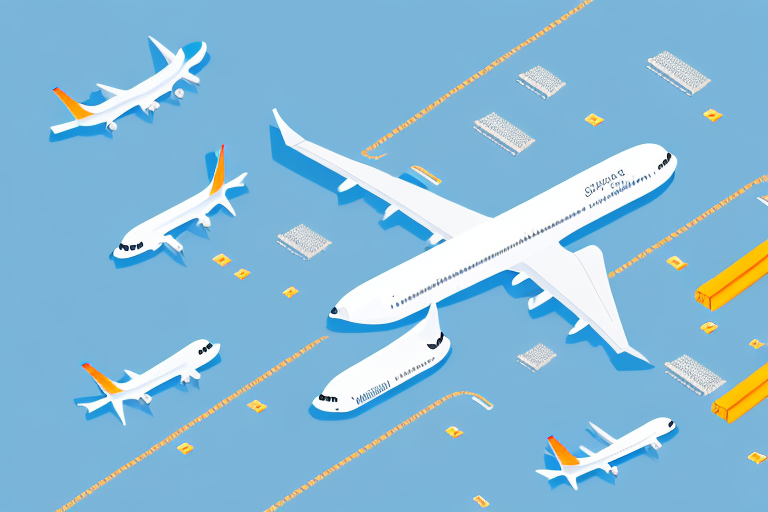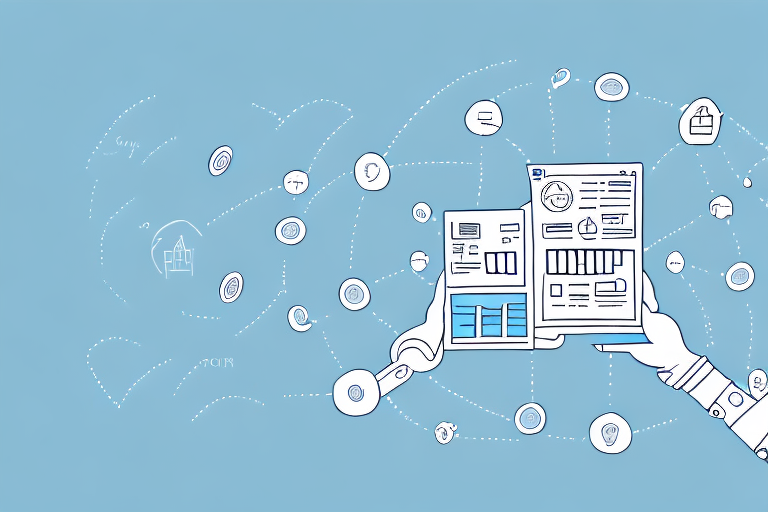Understanding the Impact of Airline Terminal Fees on Supply Chain Management
As the world becomes more interconnected, logistics and supply chain management are evolving in complexity. Airports, being a crucial part of the global transportation system, play a pivotal role, with airline terminal fees emerging as a significant factor influencing supply chain dynamics. This article delves into the intricacies of airline terminal fees and examines their impact on supply chain management.
The Nuts and Bolts of Airline Terminal Fees
Airline terminal fees are charges levied on airlines by airports for the use of their facilities. These fees are typically calculated on a per-passenger or per-tonne-of-cargo basis and cover costs related to airport maintenance, security, and other essential services. According to the International Air Transport Association (IATA), terminal fees can account for up to 15% of an airline's operating costs.
It's important to note that airline terminal fees can vary significantly depending on the airport and the range of services provided. For instance, some airports may impose additional fees for the use of premium facilities such as lounges or designated gates. Moreover, fees tend to escalate during peak travel seasons or for international flights. Airlines often negotiate with airports to secure lower fees or discounts based on the volume of passengers or cargo they handle, which can aid in managing operational costs and offering more competitive pricing to consumers.
How Airline Terminal Fees Affect Supply Chain Management
Airline terminal fees play a crucial role in shaping supply chain management by influencing transportation costs. Elevated terminal fees directly increase the cost of moving goods, which can lead to higher prices for consumers. A study by Supply Chain Quarterly indicates that a 10% increase in terminal fees can result in a 2-3% rise in product prices.
Additionally, higher fees can extend lead times and transit durations, potentially affecting product availability in the market. Companies may also reconsider their transportation strategies, opting for alternative modes such as sea or land transport to mitigate these costs. While these alternatives might reduce fees, they often come with longer transit times and increased logistical complexity, impacting the overall efficiency of the supply chain.
The Effect of Airline Terminal Fees on Freight Forwarders and Shippers
Freight forwarders and shippers bear the brunt of airline terminal fees, which are typically passed down by airlines and subsequently to their customers. This cascade of costs can erode profit margins and make services less competitive. According to a report by FAO, freight forwarders may experience profit margin reductions of up to 5% due to increased terminal fees.
Beyond financial implications, higher fees can lead to shipment delays as freight forwarders and shippers negotiate with customers to cover these additional costs. Such delays can frustrate customers, damage business relationships, and harm reputations. In some cases, businesses might opt out of using air freight altogether, favoring slower but cheaper transportation methods, which can compromise the speed and responsiveness of global supply chains.
Who Pays for Airline Terminal Fees in the Supply Chain?
The financial burden of airline terminal fees predominantly falls on end customers. Airlines incorporate these fees into the pricing of tickets or cargo charges, effectively passing the cost along the supply chain. Consequently, consumers often bear the highest price for goods and services affected by these fees.
However, some companies choose to absorb the cost of terminal fees to maintain competitiveness. By doing so, they may forgo passing the full expense onto customers but impact their own profit margins instead.
For businesses, understanding and strategically managing airline terminal fees is essential. This may involve negotiating better rates with airlines or exploring alternative transportation options to minimize these costs and remain competitive in the market.
How to Minimize the Impact of Airline Terminal Fees on Your Business
Businesses can adopt several strategies to mitigate the impact of airline terminal fees:
- Negotiation: Bundle cargo shipments and negotiate better rates with airlines.
- Consolidation: Combine shipments to reduce fees per tonne of cargo.
- Strategic Carrier Selection: Use air cargo carriers operating close to destination airports to minimize intermediary fees.
- Packaging Optimization: Reduce the size and weight of cargo to lower fees.
- Eco-Friendly Packaging: Utilize sustainable materials to potentially benefit from reduced fees under airlines' sustainability initiatives.
- Alternative Transportation: Consider sea or rail transport for cost-effective and longer-term solutions.
Implementing these strategies can significantly reduce the financial strain of terminal fees and enhance overall supply chain efficiency.
The Role of Technology in Managing Airline Terminal Fees
Technology plays a pivotal role in managing and mitigating the effects of airline terminal fees. Automation and advanced software allow businesses to optimize operations, streamline processes, and reduce expenses. Tools such as real-time tracking and predictive analytics enable businesses to manage shipments more efficiently, thereby lowering costs.
Moreover, technology facilitates accurate and transparent billing processes. Electronic invoicing and payment systems help airlines and terminal operators track and manage financial transactions seamlessly. This not only saves time and resources but also minimizes the risk of errors and disputes, enhancing overall operational efficiency.
Case Studies: Real-Life Examples of How Airline Terminal Fees Affect Supply Chain Management
Several case studies highlight the tangible impact of airline terminal fees on supply chain management:
- Consumer Electronics Company: Struggling with high terminal fees, the company switched to a carrier with more favorable pricing. This move increased profit margins and reduced overall costs, enabling more competitive pricing for consumers.
- Fashion Retailer: Heavily reliant on air freight, the retailer faced margin erosion due to high terminal fees. By exploring sea and rail transportation, the company achieved cost savings and improved its competitive stance in the market.
These examples demonstrate how strategic adjustments in transportation methods and carrier selection can mitigate the adverse effects of airline terminal fees.
The Future of Airline Terminal Fees and Their Impact on the Supply Chain
The trajectory of airline terminal fees remains uncertain. With ongoing airport modernization and technological investments, fees may continue to rise, squeezing business profitability. However, advancements in supply chain management and technology can offer pathways to navigate these challenges effectively.
Potential solutions include:
- Alternative Transportation: Utilizing rail or sea transport for certain goods to reduce dependency on air freight and associated fees.
- Shared Resources: Partnering with other companies to share transportation costs and resources.
- Sustainable Practices: Adopting eco-friendly transportation options, such as electric planes or alternative fuels, which may influence future fee structures.
As consumer behavior shifts towards sustainability, businesses must adapt their supply chain strategies to align with evolving demands, potentially reshaping the landscape of airline terminal fees.
Strategies for Negotiating Better Rates on Airline Terminal Fees
Effective negotiation can lead to more favorable terminal fee rates. Businesses can:
- Leverage Volume Discounts: Negotiate discounts based on shipment volume or long-term contracts.
- Multi-Year Contracts: Secure better pricing and cost predictability through extended agreements.
- Guaranteed Volumes: Commit to specific shipment volumes to obtain reduced fees.
These strategies can help businesses secure more advantageous terms and reduce the financial impact of terminal fees.
Tips for Optimizing Your Supply Chain Around Airline Terminal Fees
Optimizing the supply chain in the context of airline terminal fees involves several best practices:
- Consolidate Shipments: Combine multiple shipments to lower per-unit fees.
- Efficient Cargo Carriers: Select carriers that offer competitive rates and operate from cost-effective airports.
- Alternative Transport Modes: Incorporate rail or maritime transport to diversify transportation options.
- Real-Time Tracking: Utilize tracking technologies to enhance shipment visibility and reduce delays.
- Predictive Analytics: Employ data analytics to identify and capitalize on cost-saving opportunities.
Implementing these tips can lead to significant cost reductions and improved supply chain efficiency.
The Link Between Airline Terminal Fees and Sustainability in the Supply Chain
Airline terminal fees have implications for sustainability within the supply chain. Higher fees often correlate with increased carbon emissions, as businesses may opt for less efficient transportation methods to avoid air freight costs. A report by UN Sustainable Development highlights that optimizing supply chains can significantly reduce carbon footprints by minimizing unnecessary air transport.
Businesses can enhance sustainability by:
- Optimizing Supply Chains: Streamlining operations to reduce air transport frequency.
- Reducing Cargo Size and Weight: Lowering fees and environmental impact simultaneously.
- Adopting Eco-Friendly Packaging: Using sustainable materials to align with environmental initiatives.
These measures not only mitigate the financial impact of terminal fees but also contribute to broader environmental goals.
Regulatory Challenges in Managing Airline Terminal Fees for Supply Chain Managers
Regulatory complexities can pose significant challenges for supply chain managers in handling airline terminal fees. Regulations vary by country and airport, complicating compliance and potentially leading to unexpected costs or shipment delays. According to the World Trade Organization (WTO), inconsistent regulations can increase operational uncertainties and costs.
To navigate these challenges, supply chain managers should:
- Stay Informed: Keep abreast of regulatory changes and requirements in different regions.
- Compliance Management: Implement robust compliance strategies to avoid fines and delays.
- Collaborate with Experts: Engage with regulatory experts or consultants to manage compliance effectively.
Understanding How Different Airlines Approach Terminal Fee Pricing Structures
Airlines employ varying pricing structures for terminal fees, which can influence supply chain decisions. Some airlines charge based on the weight of the shipment, while others implement a flat fee per unit shipped. Understanding these structures is crucial for businesses to make informed transportation choices and negotiate better rates.
For example, American Airlines may offer volume-based discounts, whereas Delta Airlines might focus on flat fee models. By analyzing these structures, businesses can select carriers that align best with their shipping volumes and cost strategies.
Best Practices for Managing and Budgeting for Airline Terminal Fees in Your Supply Chain
Effective management and budgeting for airline terminal fees are vital for maintaining cost efficiency in the supply chain. Best practices include:
- Advance Planning: Incorporate terminal fees into transportation budgets from the outset.
- Market Analysis: Regularly assess market rates and explore various shipping options to identify cost-saving opportunities.
- Flexible Contracts: Maintain flexibility in contracts to adapt to fluctuating fee structures.
- Cost Tracking: Implement systems to monitor and track terminal fee expenses accurately.
By adhering to these best practices, businesses can better navigate the financial challenges posed by airline terminal fees and optimize their supply chain operations.
In conclusion, airline terminal fees significantly impact supply chain management by increasing transportation costs and influencing transportation choices. However, through strategic negotiation, technology adoption, and process optimization, businesses can mitigate these effects. Emphasizing best practices and staying informed about industry trends can help companies effectively manage airline terminal fees, ensuring a resilient and cost-efficient supply chain.




















